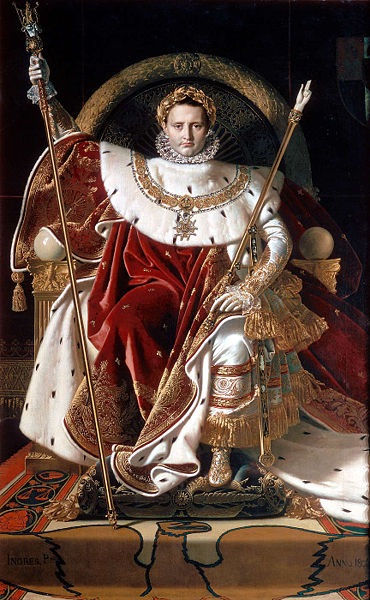To mark the bicentennary of Napoleon’s coronation as French Emperor – which took place in the cathedral of Notre-Dame in Paris on 2 December 1804 – this week’s picture is Jean-Auguste-Dominique Ingres’ portrait of Napoleon I on His Imperial Throne. Painted for the Paris Salon of 1806, this large and unforgettably bizarre picture marked Ingres’ public debut. It can be seen, these days, in the Musee de l’Armee in Paris.
Despite its scale and evident ambition, the painting was not a public commission, but Ingres’ own invention, and a testament to his youthful self-confidence. He was not important enough to have been invited to the coronation ceremony itself (an event depicted by his teacher and master, Jacques-Louis David, in an even vaster canvas now in the Louvre) and he had never even met Napoleon. So instead of producing anything remotely resembling a painting of record, he set out to weave France’s new emperor into his own unsettling fantasy of immutable, imperturbable power and authority. He created an image of such utter stasis, such magnificently frozen omnipotence, that it must have struck his more irreverent contemporaries as almost comically at odds with the actual pace of historical change, the almost bewildering succession of events, that had seen Napoleon sweep to power in the aftermath of the French Revolution.
Drawing on an eclectic variety of sources, Ingres has contrived to make one of the world’s great political opportunists look as if divinely foreordained to rule all of France, for all time. Elevated above the world of mere mortals, he is seated on a gleaming gilt throne, set on a carpeted dais decorated with images of the zodiac and the imperial Carolingian eagle. His robe is decorated with bees, a Frankish emblem revived by Napoleon to symbolise the industry and...


